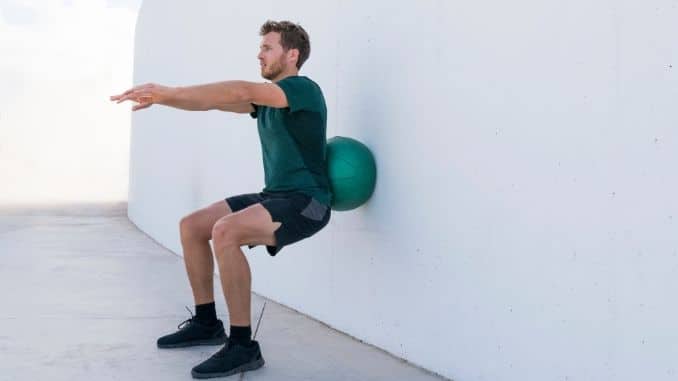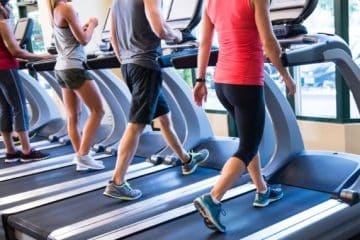The idea of strength exercise often has a notation of lifting heavy weights and breath-stealing exercises. This makes people get overwhelmed before even doing an exercise. However, this isn’t always the case. There are strength exercises like Ball Stretches that can be enjoyed without feeling beaten after.
Here’s great news for you! Working with a stability ball promotes careful and mindful movements throughout the Ball Stretches, lessening the impact of movements on your endurance and the risk of fatigue. Furthermore, using stability balls during exercise is a fun and playful way to pursue fitness goals, allowing you to enjoy your regular exercise carefree.
The Importance Of Building Foundation In Exercise
Building a foundation in exercise is vital for beginners. This initial phase sets the stage for a sustainable and efficient fitness journey. Establishing a foundation in exercise ensures that newcomers to physical activity can progress safely and effectively.
Particularly in resistance training, movements requiring heavy weights and other gym equipment can endanger users when poorly executed. Foundational Ball Stretches allows beginners to develop proper body forms, techniques, and movement patterns. This lowers the chances of getting injured and aids individuals in understanding how their bodies respond to various Ball Stretches movements.
Understanding Bodyweight Exercise
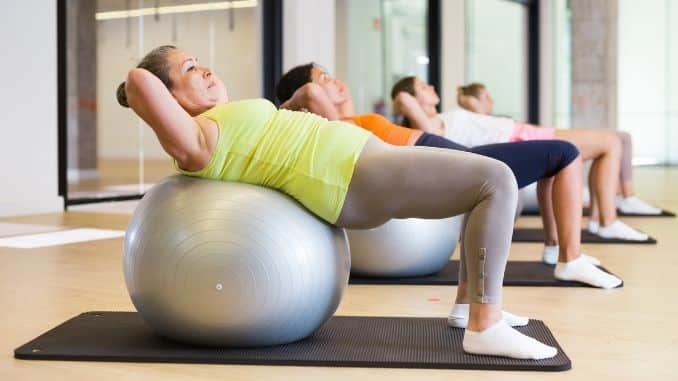
Resistance training improves muscle strength by forcing muscles to work against a weight or force. Bodyweight exercise is a type of resistance training. By employing one's body weight as resistance to counteract the force of gravity, this training regimen promotes the development of strength, flexibility, and muscle growth.
This allows individuals to conduct an effective full-body workout without gym equipment or dumbbells. This form exercise is a good foundation for beginners to learn about proper form and movement and get stronger in the process.
Furthermore, this conditions the body before diving into vigorous exercises. Bodyweight exercises are relatively low-impact, making them a good option for people of all fitness levels, including those with injuries or health conditions.
Moreover, regular bodyweight Ball Stretches is convenient and affordable for maintaining weight and fitness.
Benefits Of Stability Ball Exercises
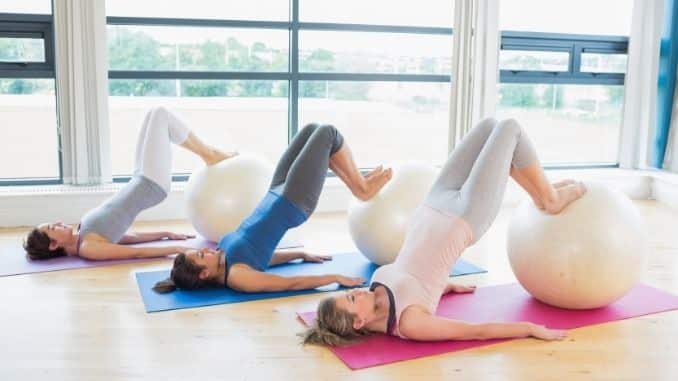
Bodyweight workouts with a stability ball or “exercise ball exercises” are fun and effective for several reasons. Firstly, they add an element of novelty and excitement to your fitness routine. The ball's instability requires focus and balance, creating an engaging challenge that keeps workouts from feeling monotonous. This sense of playfulness can make exercise more enjoyable, motivating you to stay consistent. Exercise ball workouts offer more fitness benefits that extend beyond enjoyment.
Here are other valuable benefits of exercising with a stability ball:
-
Core Strength
Stability Ball Stretches extensively engage your core muscles while maintaining balance on an unstable surface. This helps open hip flexors and strengthen the obliques, abdominal muscles, and lower back.
As the name suggests, stability balls challenge your balance and stability. Regular use can enhance proprioception (awareness of the body's position in space) and reduce the risk of falls.
-
Enhanced Posture
Engaging the core and stabilizer muscles while sitting or performing exercises on the ball can help improve posture over time, reducing the risk of back pain and discomfort.
-
Increased Flexibility
Stability balls have the potential to enhance one's overall range of motion by facilitating stretching and flexibility exercises.
-
Whole-Body Workout
Stability Ball Stretches target multiple muscle groups simultaneously. It can provide a full-body workout, from the legs and core to the upper body.
-
Low-Impact Option
Stability ball exercises are easy on the joints, making them appropriate for people dealing with joint issues or recovering from injuries.
-
Improved Muscle Tone
Regular use of stability balls can help tone and strengthen various muscle groups of the entire body, leading to a more sculpted physique.
-
Enhanced Coordination
Working out on an unstable surface requires coordination between various muscle groups, improving overall body coordination.
-
Fun And Versatile
Stability balls add an element of fun and variety to your workouts. They can be used for various exercises, from simple core exercises to advanced strength training moves.
-
Inexpensive And Portable
Stability balls are both cost-effective and convenient to store or carry. This makes them a convenient option for home workouts or gym trips.
-
Support For Rehab
In rehabilitation programs, physical therapists frequently employ stability balls to aid patients in recovering from injuries and surgeries.
-
Engagement Of Stabilizer Muscles
Stability ball exercises force your stabilizer muscles to work, improving overall muscle balance and fewer muscle imbalances.
Full Body Bodyweight Workout With Stability Ball
Warm-up
1. Spinal Twist With Ball
Firstly, begin this Ball Stretches in an upright standing position with your feet shoulder-width apart, maintaining good alignment with your head, shoulders, and hips. Secondly, hold the ball with both hands at chest level. Thirdly, engage your core and rotate your upper body from side to side while keeping your hips in a forward position. Lastly, perform with 1 set of 10 repetitions on each side.
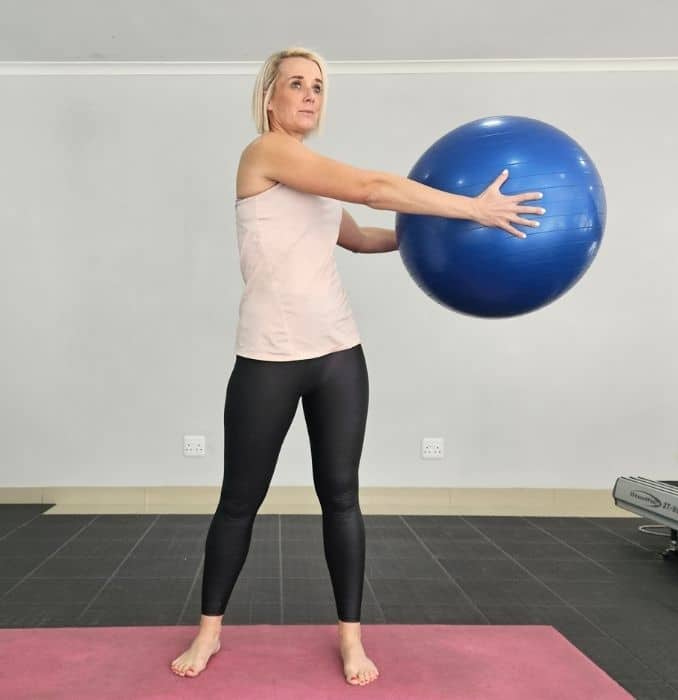 |
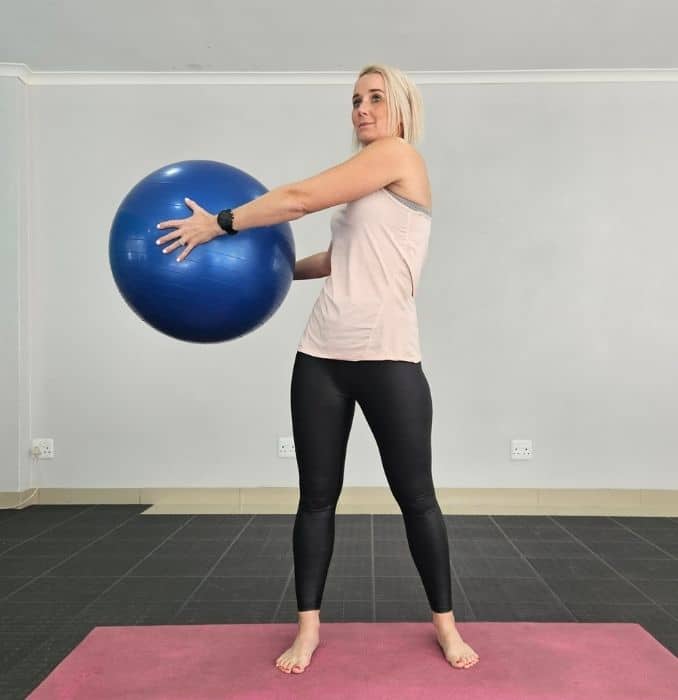 |
Twist with Ball
2. Arm Raises With Stability Ball
Begin in an upright standing position with one foot forward, maintaining good alignment with your head, shoulders, and hips. Then, hold the ball with both hands in front of your body. Engage your core and extend your arms overhead. Afterward, lower the ball back down to the starting position and repeat the movement. Finally, perform with 1 set of 10 repetitions.
 |
 |
Arm Raises with Stability Ball
3. Stability Ball Squats
Firstly, begin in an upright standing position in front of the stability ball with your feet considerably wider than shoulder-width apart and your toes pointing slightly outward. Secondly, maintain good alignment in your upper body. Thirdly, bend forward to place both hands on top of the stability ball. Fourthly, contract your abdominal area, then bend your knees and hinge through your hips to lower your seat into a squat position, pushing the ball forward. Then, raise back up to the starting position and repeat the movement. Lastly, start with 1 set of 10 repetitions.
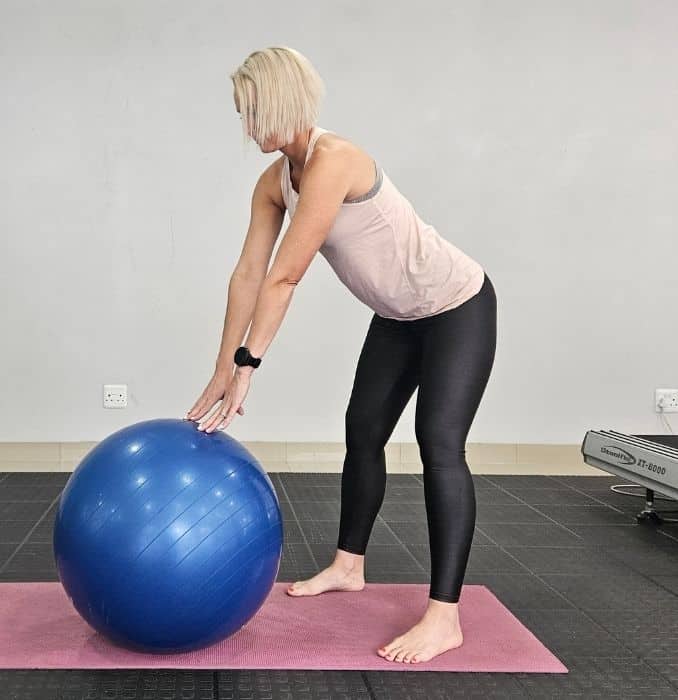 |
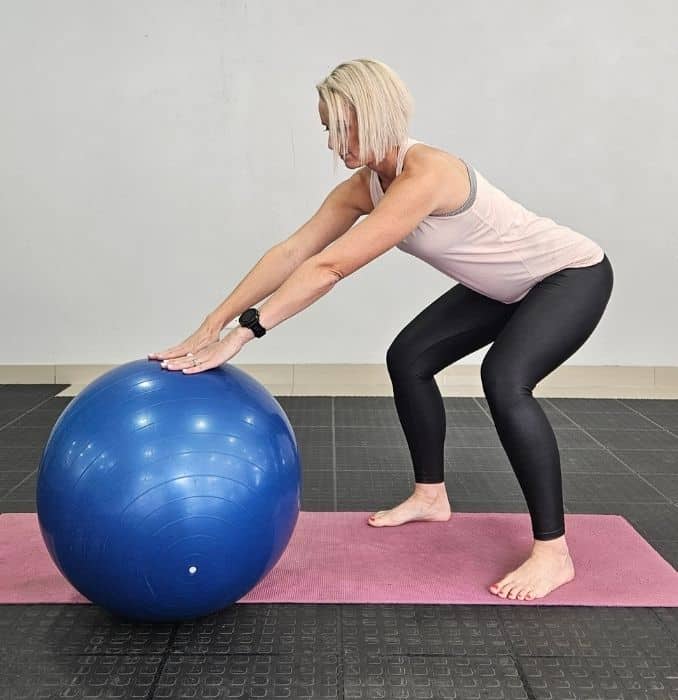 |
Stability Ball Squats
Routines
1. Stability Ball Wall Squats
For this exercise, you will need a wall or a sturdy, upright surface behind you.
Begin by standing with your feet shoulder-width apart with the stability ball positioned between your back and the wall. Then, move your legs out slightly and lean into the ball. Bend your knees to move into a squat position, ideally bringing your knees to a 90-degree angle. Afterward, raise back up and repeat the movement. Lastly, start with 1 set of 10 repetitions.
This exercise effectively targets and sculpts both the outer and inner thighs while simultaneously building a stronger core.
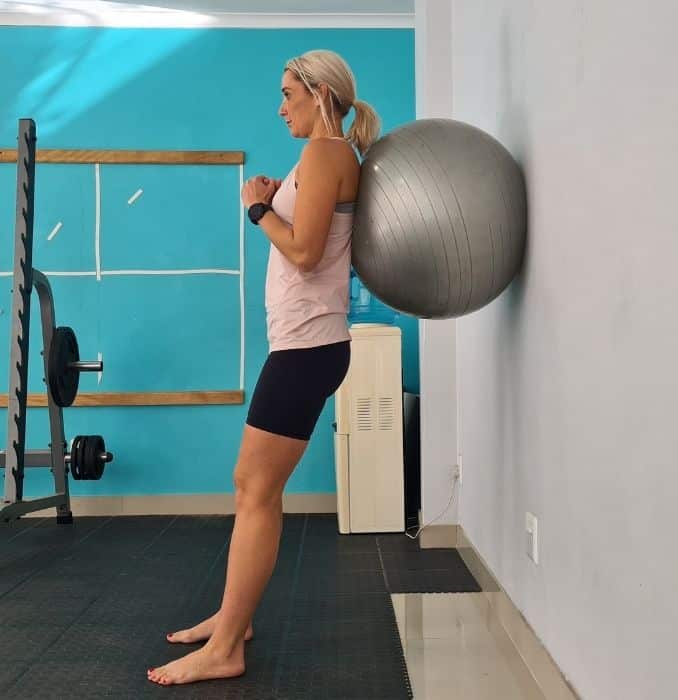 |
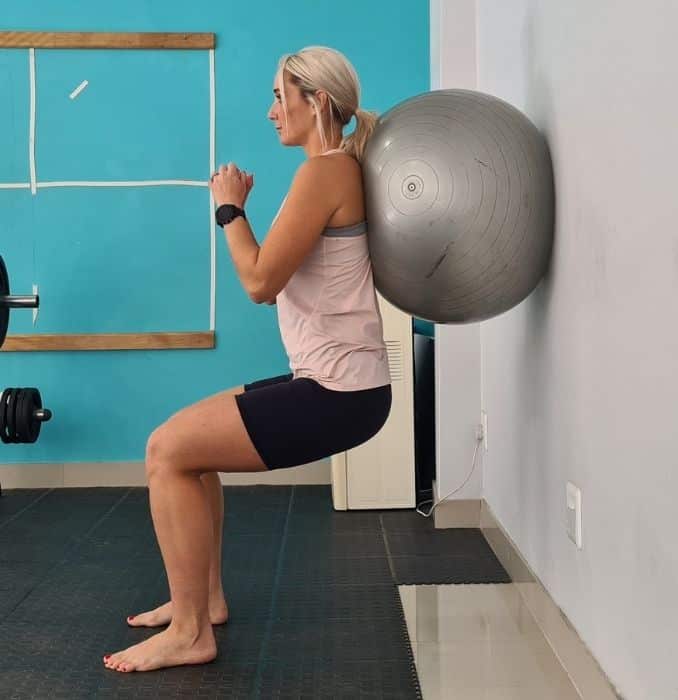 |
Stability Ball Wall Squats
2. Arm Squeezes With Ball
Firstly, begin in an upright standing position with your feet hip-width apart, maintaining a good alignment with your head, shoulders, hips, and legs. Secondly, hold the stability ball with both hands in front of your body at chest level. Thirdly, squeeze the ball tightly in both hands for a couple of seconds. Then, relax and repeat the movement as needed. Lastly, start with 1 set of 10 repetitions.
If you don't have access to a stability ball, you can create resistance by either clasping your hands or pressing your palms together at chest height.
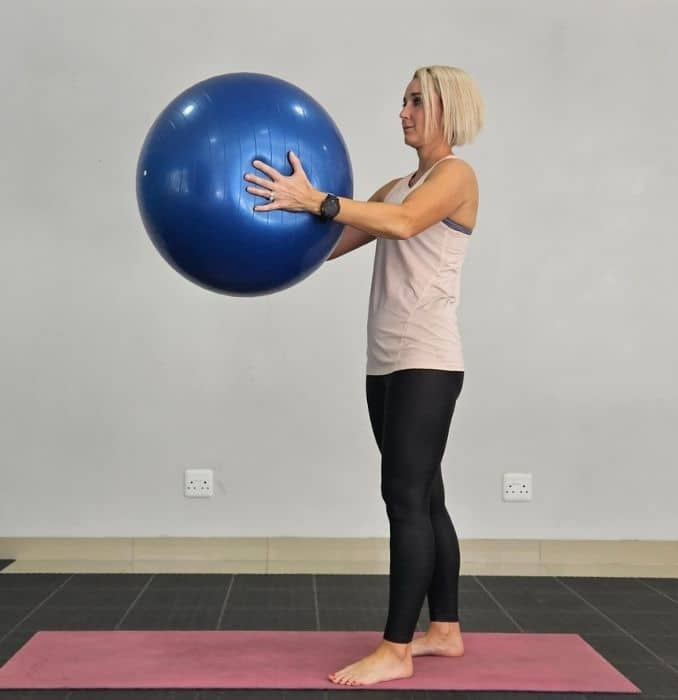
Arm Squeezes with Ball
3. Leg Squeezes
Begin in an upright standing position with your feet considerably wider than shoulder-width apart, maintaining a good alignment with your head, shoulders, and hips. Then, position the stability ball between your legs. Place both hands on your waist and tighten your core. Afterward, squeeze the ball with both legs, holding this position for a couple of seconds. Lastly, relax and repeat the movement. Start with 1 set of 10 repetitions.
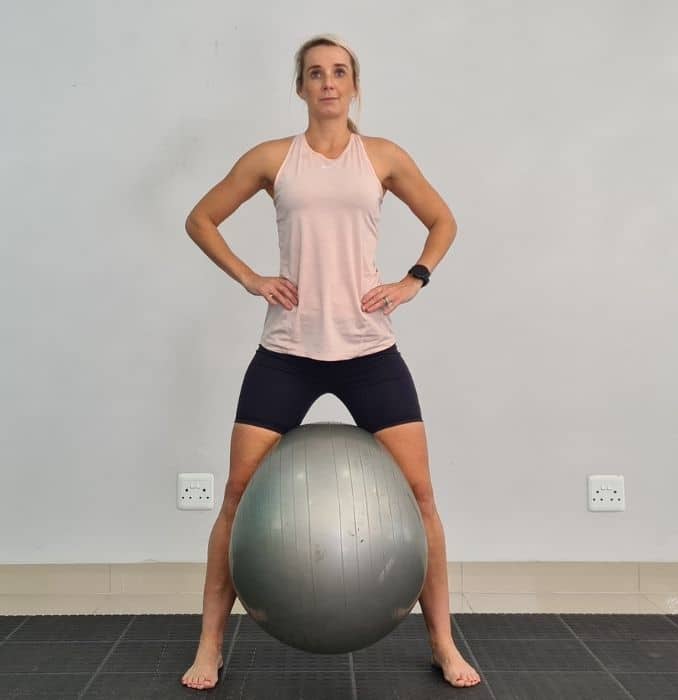
Leg Squeezes
4. Stability Ball Woodchops
Firstly, begin in an upright standing position with your feet wider than your shoulder width apart, maintaining a good alignment with your head, shoulders, and hips. Secondly, hold the ball with both hands. Thirdly, engage your core and extend your arms over one shoulder. Fourthly, lower the ball down diagonally to your opposite foot, bending your knees to move into a squat position. Then, return to the starting position and repeat the movement. Start with 1 set of 10 repetitions on each side.
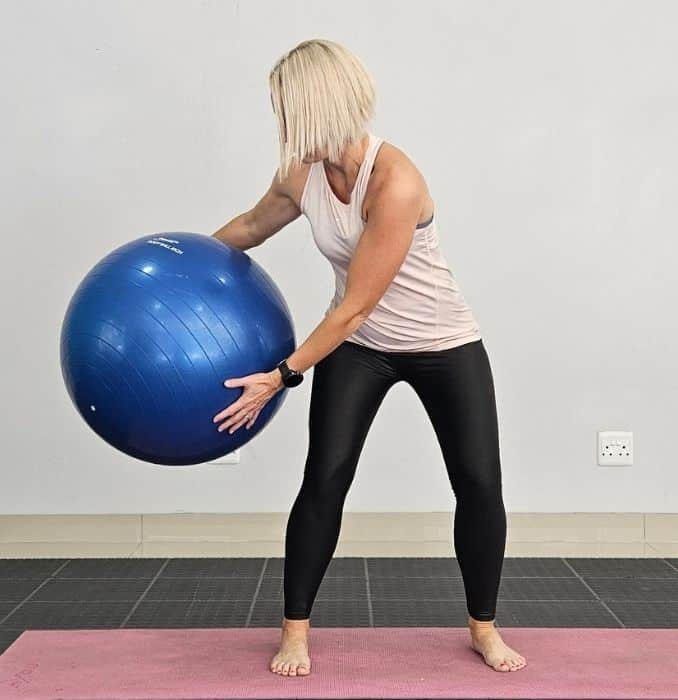 |
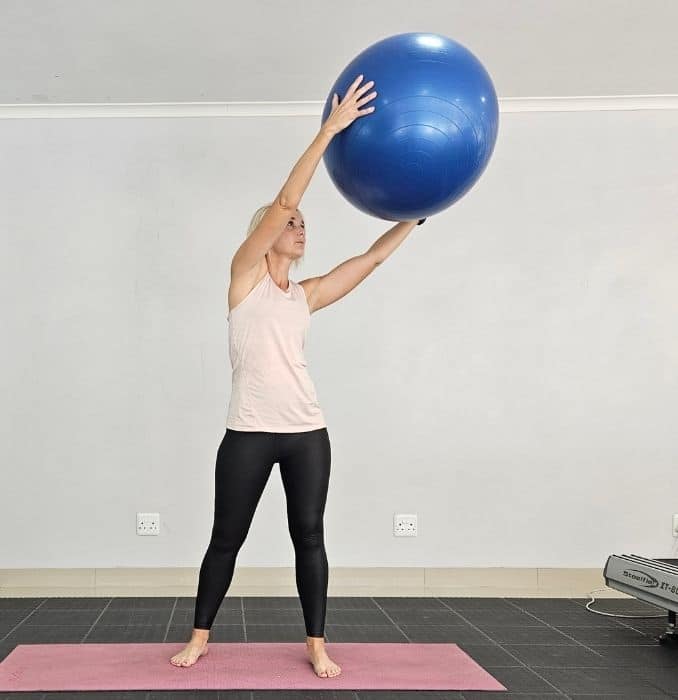 |
Stability Ball Woodchops
5. Stability Ball Knee Lift
For this exercise, utilize the wall, back of the chair, or anything stable that you can hold on to for balance if needed.
Begin in an upright sitting position on the stability ball with your knees bent and feet flat on the floor, maintaining proper alignment in your upper body. Then, place your hands on your hips or anything stable that you can hold on to for balance, like the wall. Tighten your core and drive your left knee up towards your chest. Lower your leg back down to return to the starting position and repeat the movement on the opposite leg. Start with 1 set of 10 repetitions on each leg.
 |
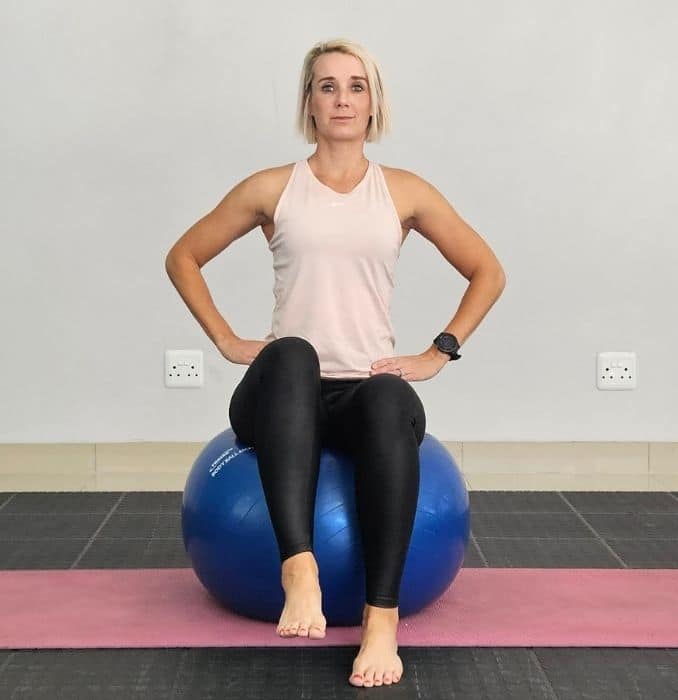 |
Stability Ball Knee Lift
6. Stability Ball Crunch
Lie on your back on the stability ball with your knees bent and feet flat on the floor. Cross your arms over your chest, maintaining good alignment with your head, shoulders, hips, and knees. Engage your core and crunch your upper body forward. Lower your upper body to the starting position and repeat the movement. Start with 1 set of 10 repetitions.
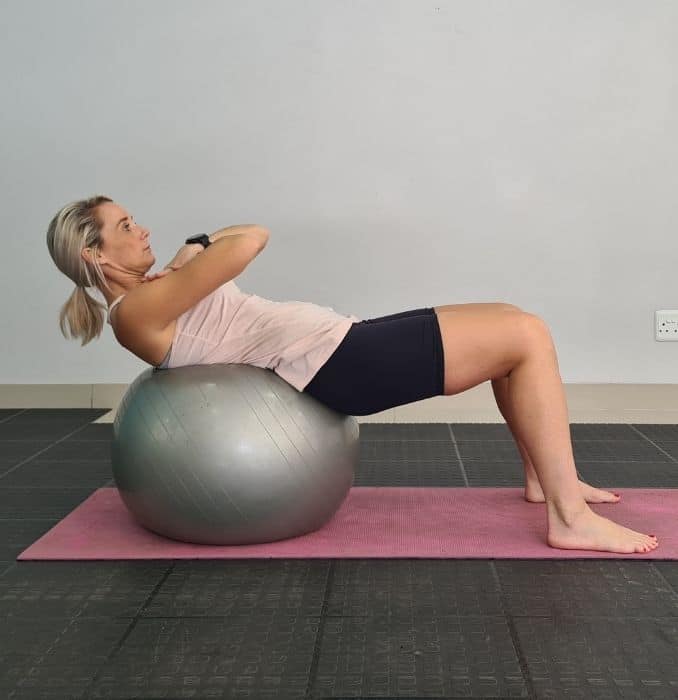 |
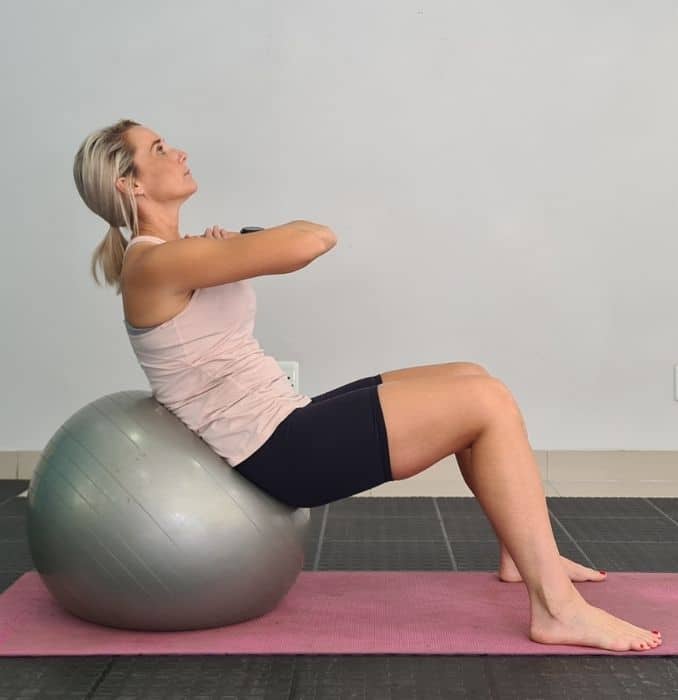 |
Stability Ball Crunch
Cool Down
1. Shoulder Rolls
Begin in an upright standing position with your feet hip-width apart, maintaining good alignment with your head, shoulders, hips, and legs. Engage your core, lift your shoulders upward, then roll your shoulders back until you feel resistance in your shoulder blades. Relax and lower your shoulders to the starting position. Repeat the movement in the opposite direction. Perform with 1 set of 10 repetitions in each direction.
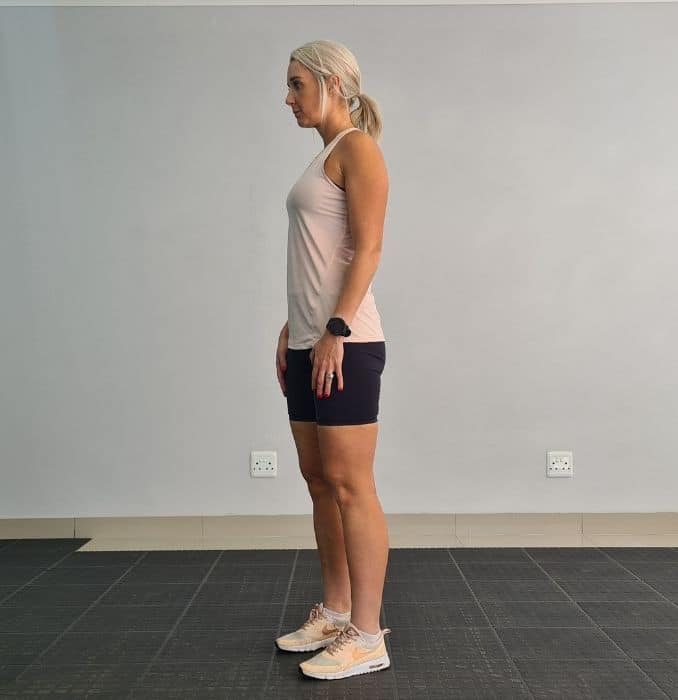 |
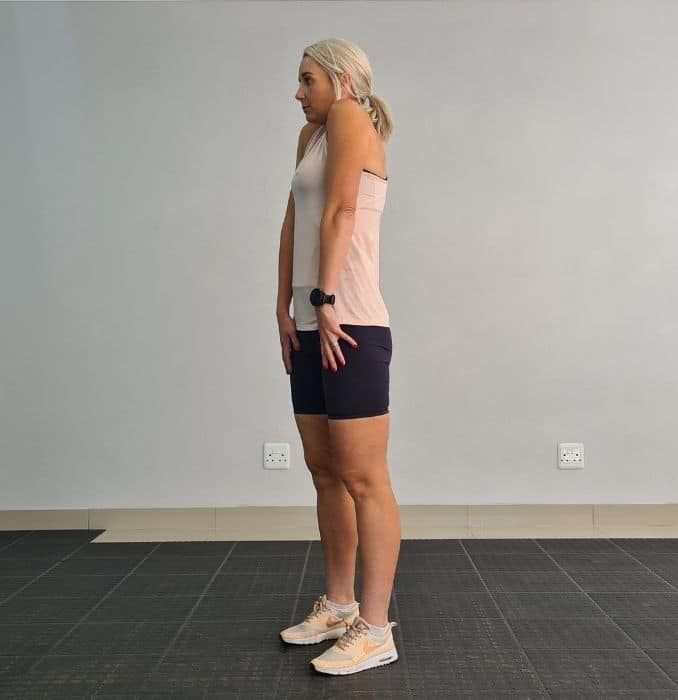 |
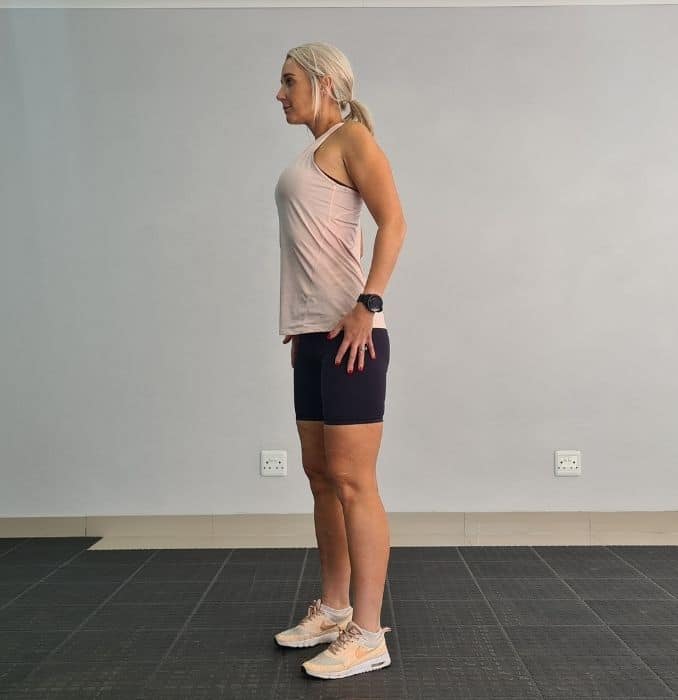 |
Shoulder Rolls
Frequently Asked Questions?
-
Can Bodyweight Exercise Build Muscle?
Yes, bodyweight exercises can build muscle. When done properly and with appropriate progression, bodyweight exercises can be highly effective for building lean muscle mass and increasing strength. However, it is important to note that bodyweight exercises may not be as fast for building muscle as weight training. This is because weight training allows you to use heavier weights, which can stimulate greater contraction of your muscles and help them increase in size. Bodyweight exercises remain viable for muscle mass development, particularly beneficial for beginners or individuals lacking access to traditional weights.
-
What Are The Best Stability Ball Exercises For The Lower Body?
Stability balls can be a fantastic tool for lower-body workouts, as they add an element of instability, engaging your core and stabilizer muscles while targeting the legs and glutes.
Here are some of the best stability ball exercises for the lower body:
-
- Stability Ball Squats
- Stability Ball Wall Sits
- Stability Ball Hamstring Curls
- Stability Ball Glute Bridges
- Stability Ball Lunges
- Stability Ball Leg Raises
- Stability Ball Deadlifts
- Stability Ball Calf Raises
-
How To Perform A Stability Ball Plank?
Kneel in front of the ball and place your forearms on the ball, positioning your elbows directly under your shoulders. Make a fist with each hand and clasp your fists together, or you can keep your hands flat on the ball. Straighten your legs as you press your toes on the floor. Your body should form a straight line from your head to your heels. Engage your core muscles to maintain this straight line. Squeeze your glutes to keep your hips level with the rest of your body. Avoid sagging your hips or lifting them too high. Maintain this plank position for as long as possible. Beginners may start with shorter hold times, such as 20-30 seconds, and gradually increase the duration as they become more comfortable. You may also use your preferred size stability ball to ease this exercise.
-
How To Perform Leg Raises With A Stability Ball?
To perform a single-leg raise with a stability ball:
- Begin lying on your back with your arms extended to the sides and your palms facing down for balance.
- Place a stability ball between your ankles.
- Hover your legs off the ground, keeping them straight, and engage your core for stability.
- Slowly lift both legs upward to a 90-degree angle, keeping it straight and controlling the stability ball.
- Lower your legs back down without touching the ball to the ground and repeat the motion for the desired number of repetitions.
This exercise targets your core muscles, particularly the lower abdominals while working on leg strength and balance.
Conclusion
Overall, bodyweight workouts and stretching exercises with stability balls are an efficient way to improve fitness. They are effective, low-impact, and convenient. Bodyweight exercises improve stability, flexibility, and strength. Consistent engagement in bodyweight exercises leads to various health advantages, such as improved weight control, enhanced sleep quality, and increased stamina.
Moreover, it is an affordable regimen to support overall well-being. Complementing bodyweight exercises with proper nutrition, hydration, sufficient sleep, and a healthy lifestyle will make fitness goals more attainable. Thus, developing a sense of accountability is important to improve health and sustain the body’s demands.
Here at EFI, we understand that the multitude of different fitness options available on the market today can be incredibly overwhelming. Our 101 Video series is designed to take the guesswork out of any physical fitness endeavors you might pursue.

